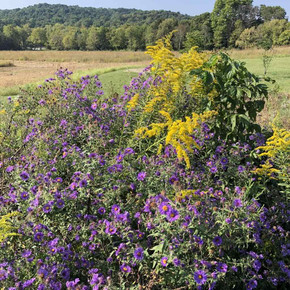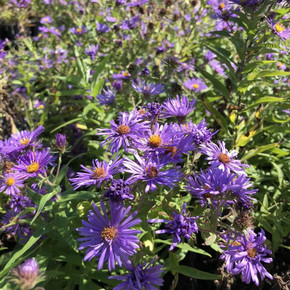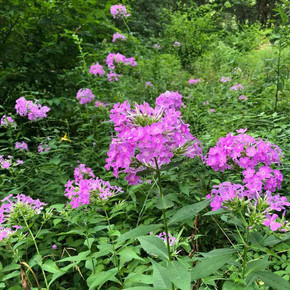
Primula elatior (wild form) - OXLIP
Small and modest woodland edge perennial. Large pale yellow flowers in clusters.
Goes well with spring bulbs and native ephemerals.
Old-fashioned, favorite plant in Europe, awarded by Award of Garden Merit by RHS (Royal Horticultural Society) in Britain.
Blooming Time: early to mid spring (end of March to April/May, depending to your zone)
Size: usually 8-10" tall x 5-8" wide
USDA Zones: 4 to 8
Culture: half sun to sun in cooler areas or with enough moisture. Prefers part shade to half shade. Adaptable to many other soils, including clay.
Moisture Needs: medium, medium-moist, temporary moist soil, fairly drought tolerant once established (can turn dormant in serious drought, but comes back with late summer moisture)
Origin: Europe
Black Walnut Tolerant: yes
Deer/Rabbit Resistant: yes / yes
Attracts Butterflies or Pollinators: flowers attract some bees (usually blooms too early for butterflies)
Attracts Hummingbirds: no
Pot Size: square 3.5" x 4" deep perennial pot
Plant combinations: Easy to grow woodland edge perennial. Great for shade or half shade gardens or shade parts of rock gardens. Combine with Aquilegia, Asarum, Brunnera, Dicentra, Disporum, Epimedium, Helleborus, Hepatica, Heuchera, Hosta, Lathrus vernus, Omphalodes, Polygonatum, Uvularia and spring ephemerals like Jeffersonia, Mertensia, Sanguinaria,Trillium, grasses like Carex and Hakonecloa.
Picture copyright: BerndH

Primula elatior (wild form) - OXLIP
Small and modest woodland edge perennial. Large pale yellow flowers in clusters.
Goes well with spring bulbs and native ephemerals.
Old-fashioned, favorite plant in Europe, awarded by Award of Garden Merit by RHS (Royal Horticultural Society) in Britain.
Blooming Time: early to mid spring (end of March to April/May, depending to your zone)
Size: usually 8-10" tall x 5-8" wide
USDA Zones: 4 to 8
Culture: half sun to sun in cooler areas or with enough moisture. Prefers part shade to half shade. Adaptable to many other soils, including clay.
Moisture Needs: medium, medium-moist, temporary moist soil, fairly drought tolerant once established (can turn dormant in serious drought, but comes back with late summer moisture)
Origin: Europe
Black Walnut Tolerant: yes
Deer/Rabbit Resistant: yes / yes
Attracts Butterflies or Pollinators: flowers attract some bees (usually blooms too early for butterflies)
Attracts Hummingbirds: no
Pot Size: square 3.5" x 4" deep perennial pot
Plant combinations: Easy to grow woodland edge perennial. Great for shade or half shade gardens or shade parts of rock gardens. Combine with Aquilegia, Asarum, Brunnera, Dicentra, Disporum, Epimedium, Helleborus, Hepatica, Heuchera, Hosta, Lathrus vernus, Omphalodes, Polygonatum, Uvularia and spring ephemerals like Jeffersonia, Mertensia, Sanguinaria,Trillium, grasses like Carex and Hakonecloa.
Picture copyright: BerndH








